Tomato blight – treatments the gardening experts swear by
Did yours suffer this year? These tomato blight treatments will help you avoid or deal with this dreaded disease that can wipe out your tomato crop
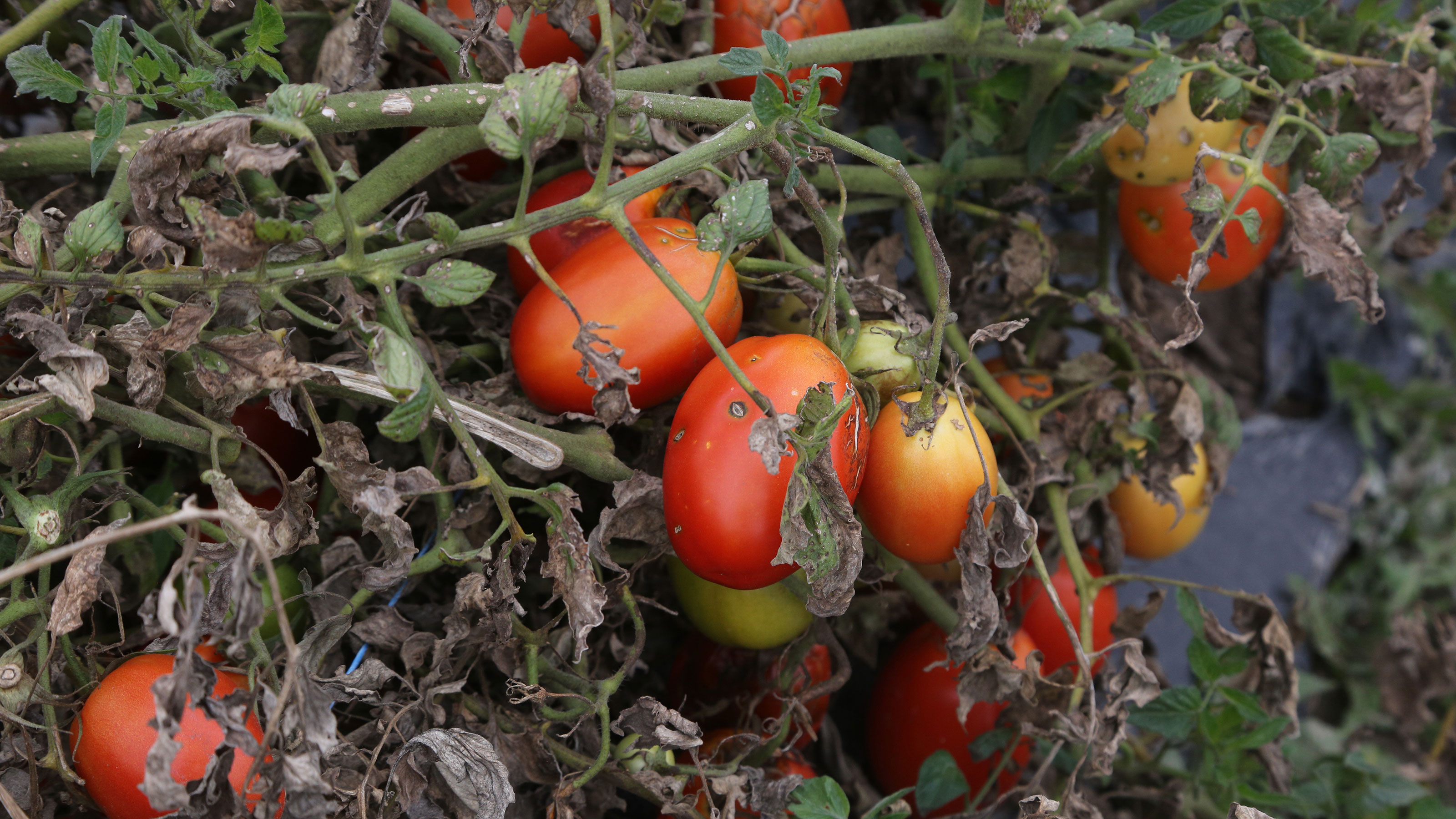

Every year gardeners will desperately seek out a tomato blight treatment to help salvage their homegrown crop of tomatoes.
Even if you're an expert at growing tomatoes, chances are you'll have encountered this devastating tomato disease at some point.
Tomato blight – or Phytophthora infestans – otherwise known as late blight, is among the worst problems affecting tomatoes. It is the same fungus that can turn potatoes to mush and similarly affects tomatoes, which are cousins of the tubers.
One moment your plants can be looking lush and healthy, the sweet smell of the ripening fruits filling the air – but then within only a few days the plants can be ravaged by blight which can sweep through them like wildfire.
So arm yourself with the knowledge of how to avoid the disease, or know the best tomato blight treatments if it does affect your plants.
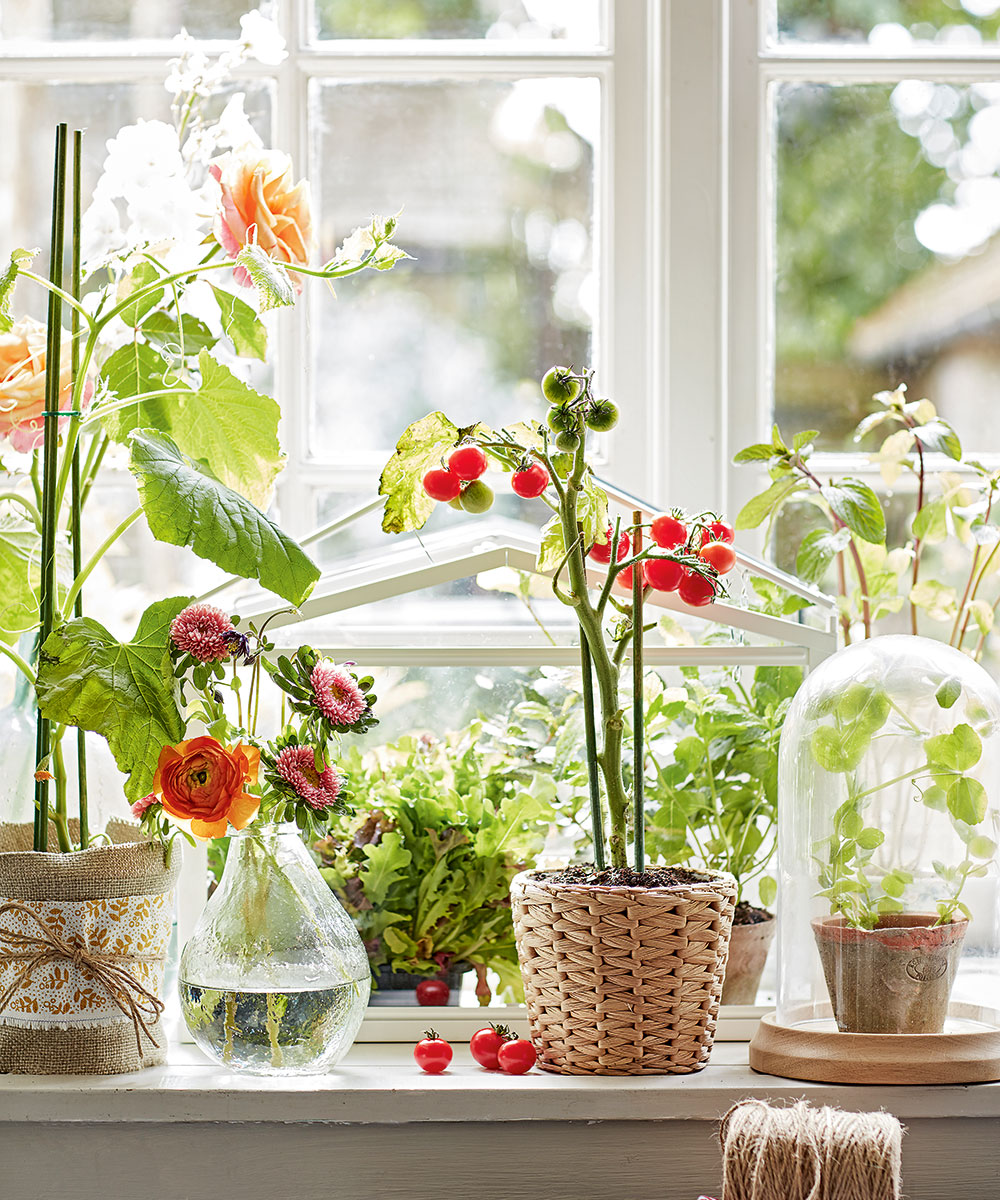
Tomato blight – treatments for outdoor and indoor crops
Because tomato blight is spread by airborne spores carried on the wind, and it likes warm, wet conditions, outdoor grown tomatoes are more susceptible to it that those grown in the greenhouse or polytunnel.
Tomatoes are therefore a perfect choice for greenhouse ideas, or for growing in other environments under cover.
That's not to say that greenhouse crops are completely in the clear. Given the right conditions, late tomato blight can just as easily ravage an indoor tomato crop, but it is easier to control the environmental conditions under cover, such as keeping rain off the plants.
The same tomato blight treatments apply whether you grow your tomatoes indoors or outdoors.
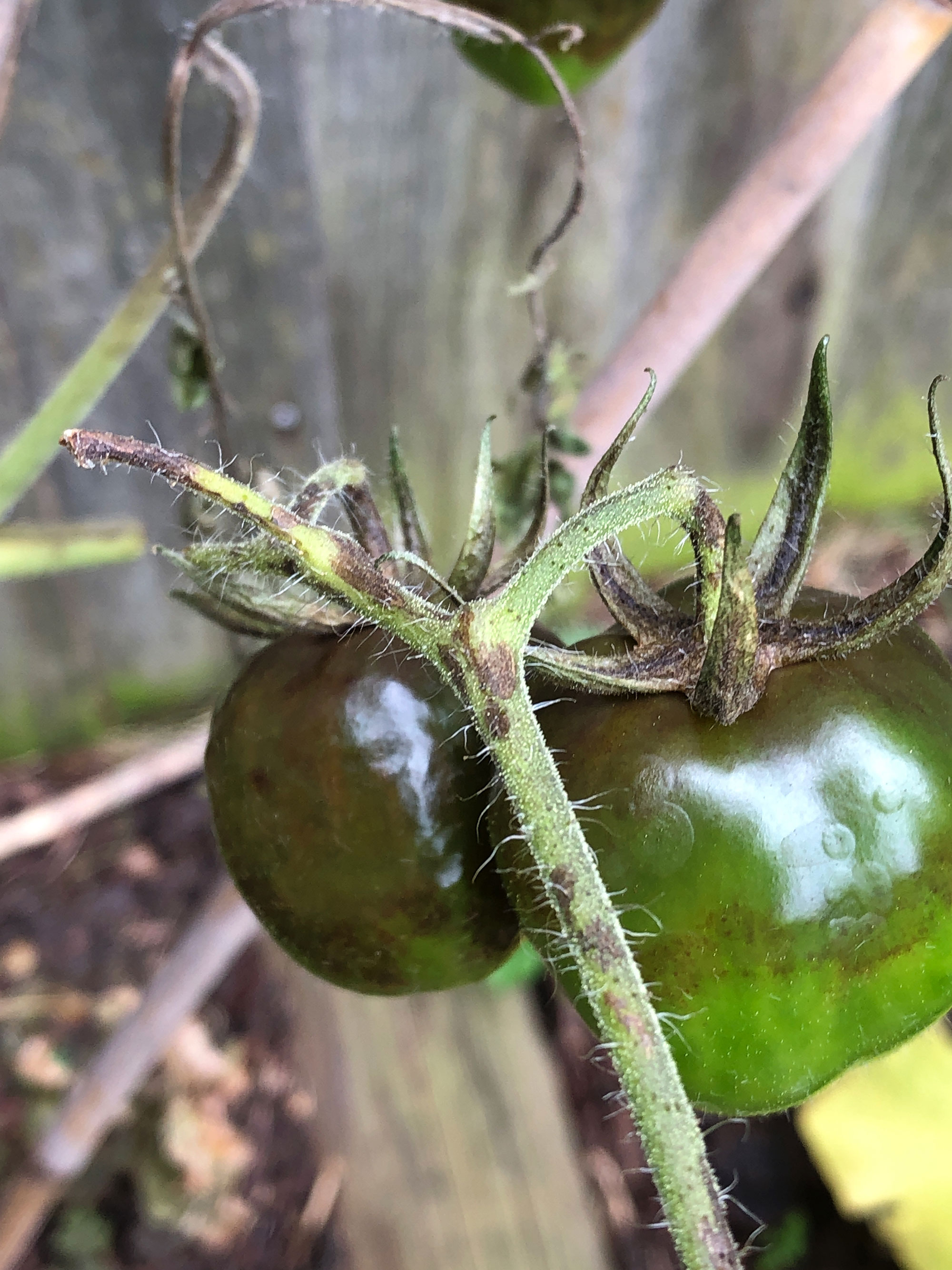
What does tomato blight look like?
Tomato blight is a fungal infection that appears on different parts of the tomato plant.
'In the early stages of late tomato blight, the bottom leaves get affected first with black rings of powdery blight. This makes the leaves turn pale green to a musty yellow in color and appearance,' explains Tammy Sons of Tennessee Wholesale Nursery.
'The leaves eventually get so infected they drop. As the blight progresses up the stalk of the tomato vine, the tomatoes get brown spots on them as the entire plant becomes infested. End-stage blight makes the entire tomatoes rot from the blight infection,' Tammy adds.
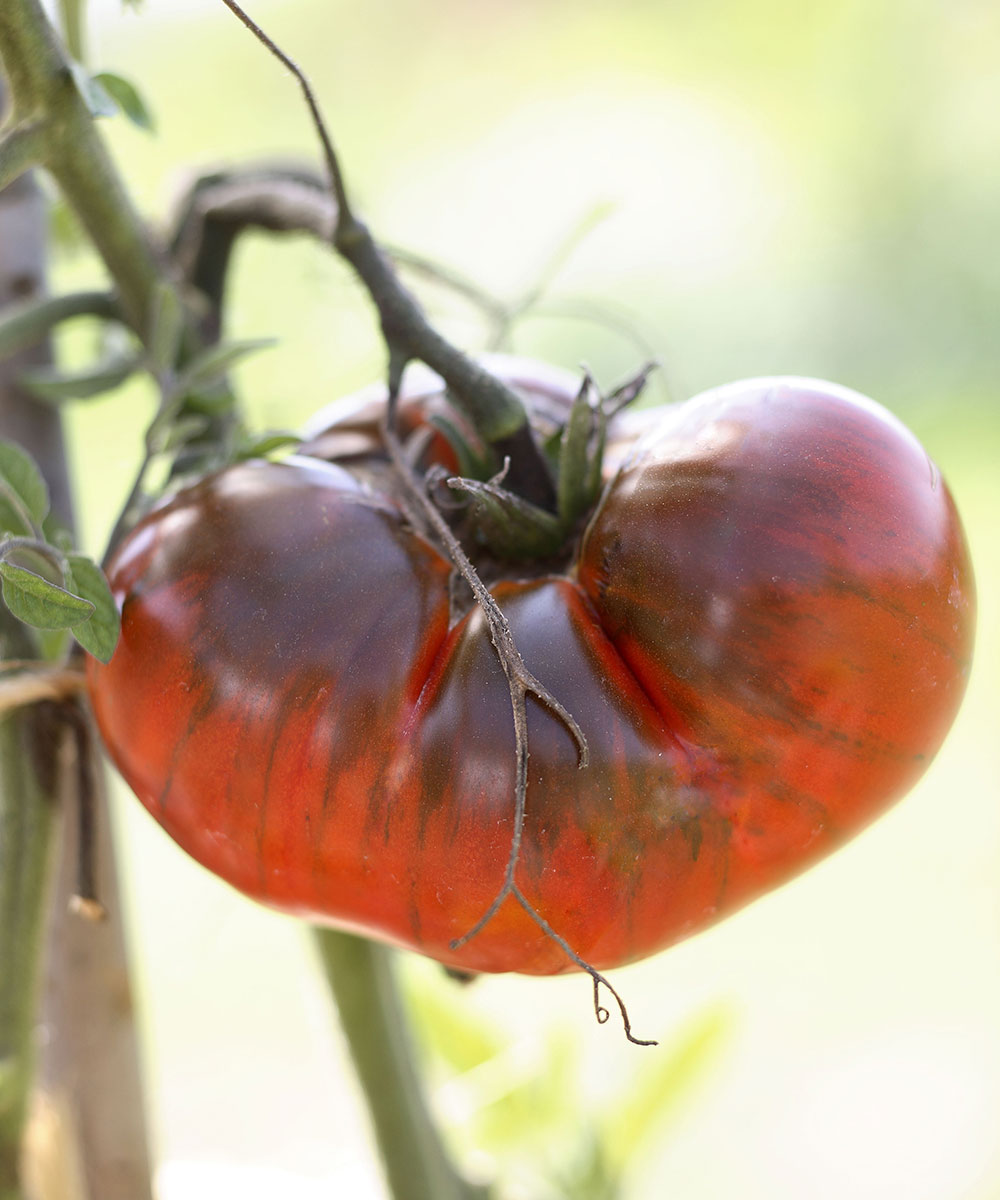
The signs of tomato blight in the order they are likely to appear are:
- Small brown marks appearing on the plant’s lower leaves.
- Leaves turning pale green to a musty yellow in color and appearance
- Infected leaves dropping.
- Brown spots appearing on the stems and branches of the tomato plant.
- The fruits developing deep brown sunken spots.
- The plant's health failing and branches turning to mush and collapsing.
Tomato blight can kill a plant within a week, so it's important to keep looking out for any telltale signs, and act quickly as soon as you spot them.

How do you stop tomato blight?
The simple answer is that you can't stop tomato blight altogether – but you can take steps to prevent the chances of infection occurring.
'There are no chemical controls for tomato blight available to the home gardener,' says Simon Crawford, breeder at Burpee Europe.
But rather than turning to tomato blight treatment once your crop has been affected, 'two other key methods should be used to control the disease: environmental management and the use of resistant varieties,' Simon continues.
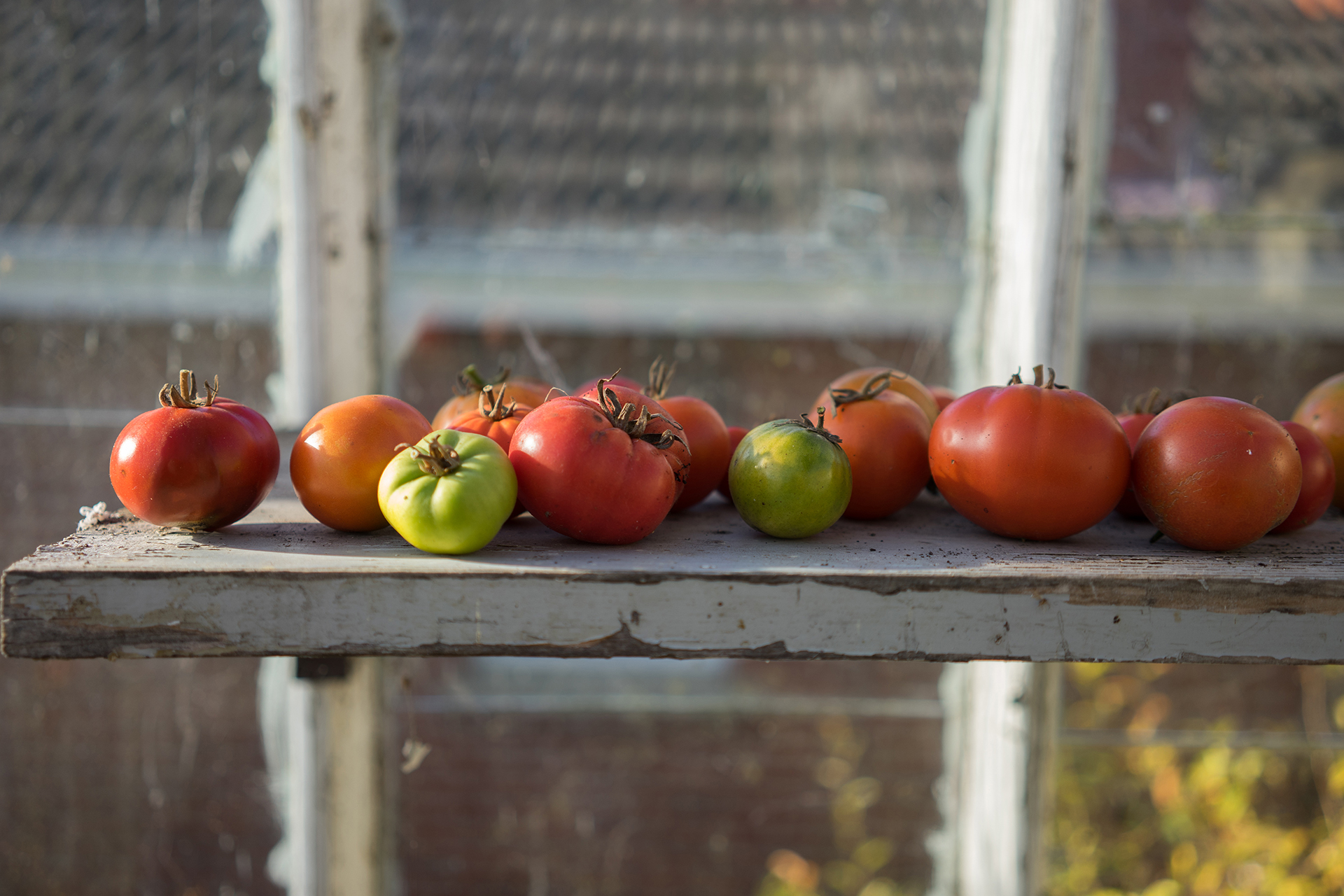
Environmental controls for tomato blight
The following environmental controls can help to prevent the occurrence or spread of tomato blight:
- Keep tomato plants dry. 'Environmental control must focus on reducing the likelihood of leaves remaining wet for an extended period, so trimming foliage and side-shoots to maximise air movement and ensure the evaporation of surface moisture is essential,' explains Simon Crawford. So learn how to prune tomato plants properly.
- Keep plants well ventilated. If growing tomato plants in a greenhouse or polytunnel, avoid these becoming too humid by keeping them well ventilated. Likewise, pick a well ventilated spot for growing the tomatoes outside.
- Tie up or stake plants. Support bush tomato plants with a stake to keep their leaves off the soil, or tie up cordon tomatoes regularly with soft twine to improve air circulation. 'Bush varieties grown in pots can be trimmed and partially supported with a bamboo cane to avoid a dense mass of foliage,' says Simon Crawford.
- Remove lower leaves as the fruits develop. This avoids leaves resting on damp soil, and also helps air circulation and speeds the ripening of tomatoes by providing them with maximum sun exposure.
- Water tomato plants in the morning. This is to avoid the plants sitting damp all night. Try to water the soil only and keep the leaves and plants dry.
- Plant tomatoes in a disease free location. Never plant tomatoes in soil or compost that has previously contained diseased plants. 'Tomato blight spores can stay in the ground for for 3 to 4 years. We've found that history will repeat itself,' says Tammy Sons
- Practise good plant hygiene. 'Proper composting of plant waste is of paramount importance and ‘plant dumps’ must be eliminated in garden and allotment situations to reduce infection. Clear as many old potatoes as possible from a plot, ' advises Simon Crawford.
- Rotate crops. Ensure potatoes and tomatoes are not planted in the same soil for successive years.
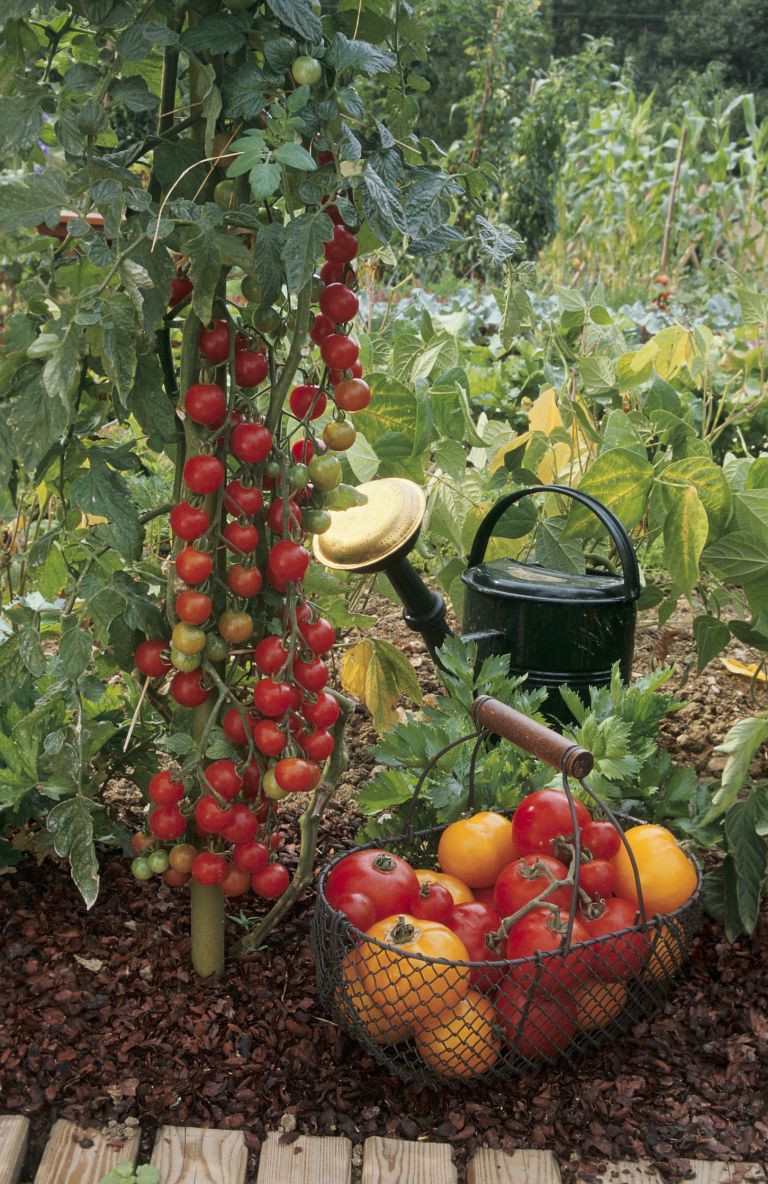
How to stop the spread of tomato blight
If the worst happens and you do find signs of blight on some of your plants, then the best tomato blight treatment is to remove these infected plants immediately to try to prevent the spread to other plants.
Check tomato plants regularly during the growing season, especially when the conditions are warm and wet.
'If you can, burn blighted plants and tomatoes,' explains gardening expert Monty Don in a video for Gardeners' World. 'Or compost the foliage and fruit, if you have a good composting system, as composting kills off the spores,' he continues.
It's important that you do no plant your tomatoes next to potatoes, which can also be victims of late blight, but carefully choose your tomato companion planting.
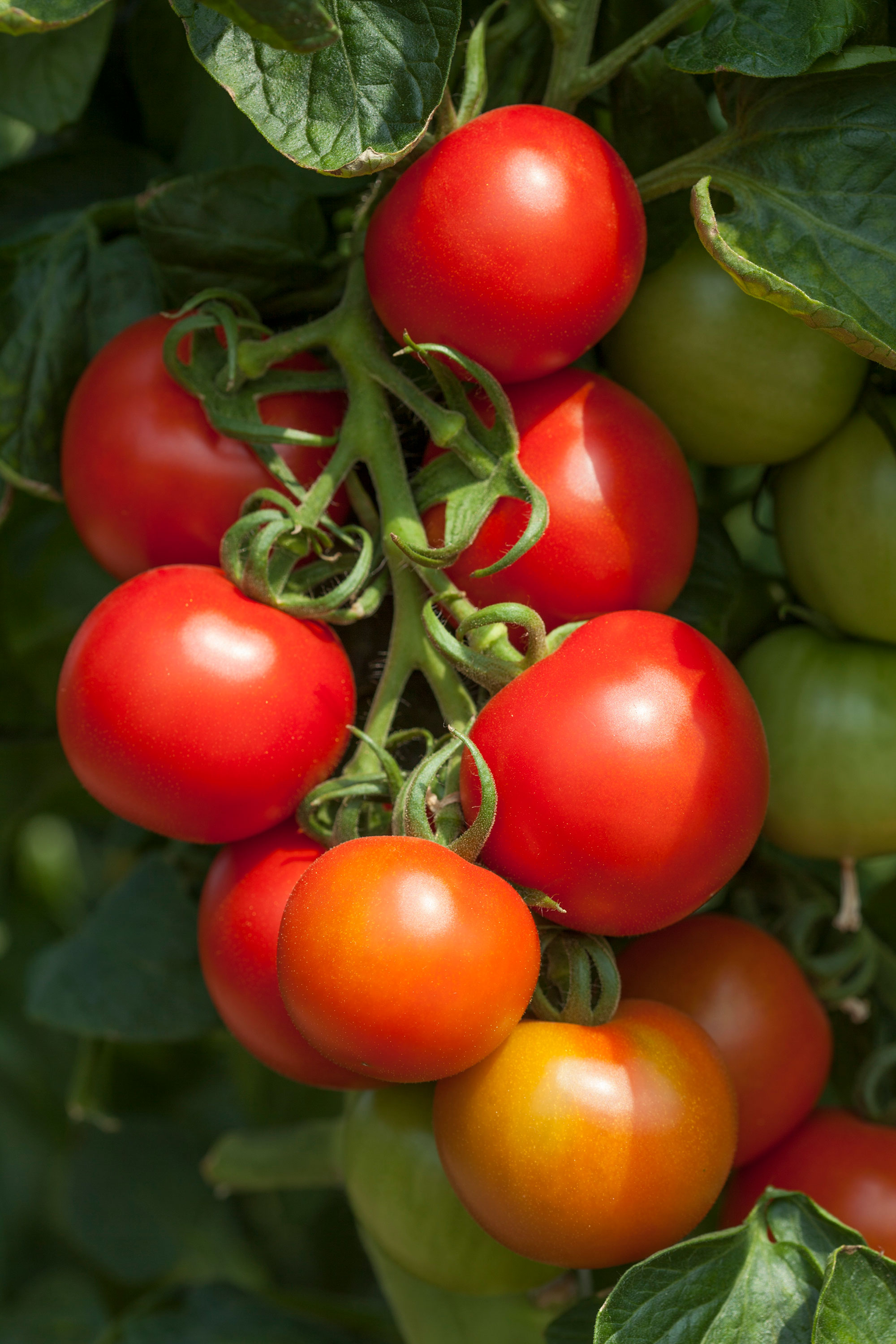
Can you eat tomatoes with blight?
If you have an infected tomato plant, while you would not want to eat any tomatoes that are obviously affected by blight, any ripe tomatoes that don't show signs of blight are still perfectly good to eat.
However, 'if you leave tomatoes on a blighted plant, they won't ripen,' says Monty Don. He advises harvesting any green tomatoes that have no signs of blight and turning these into green tomato chutney.
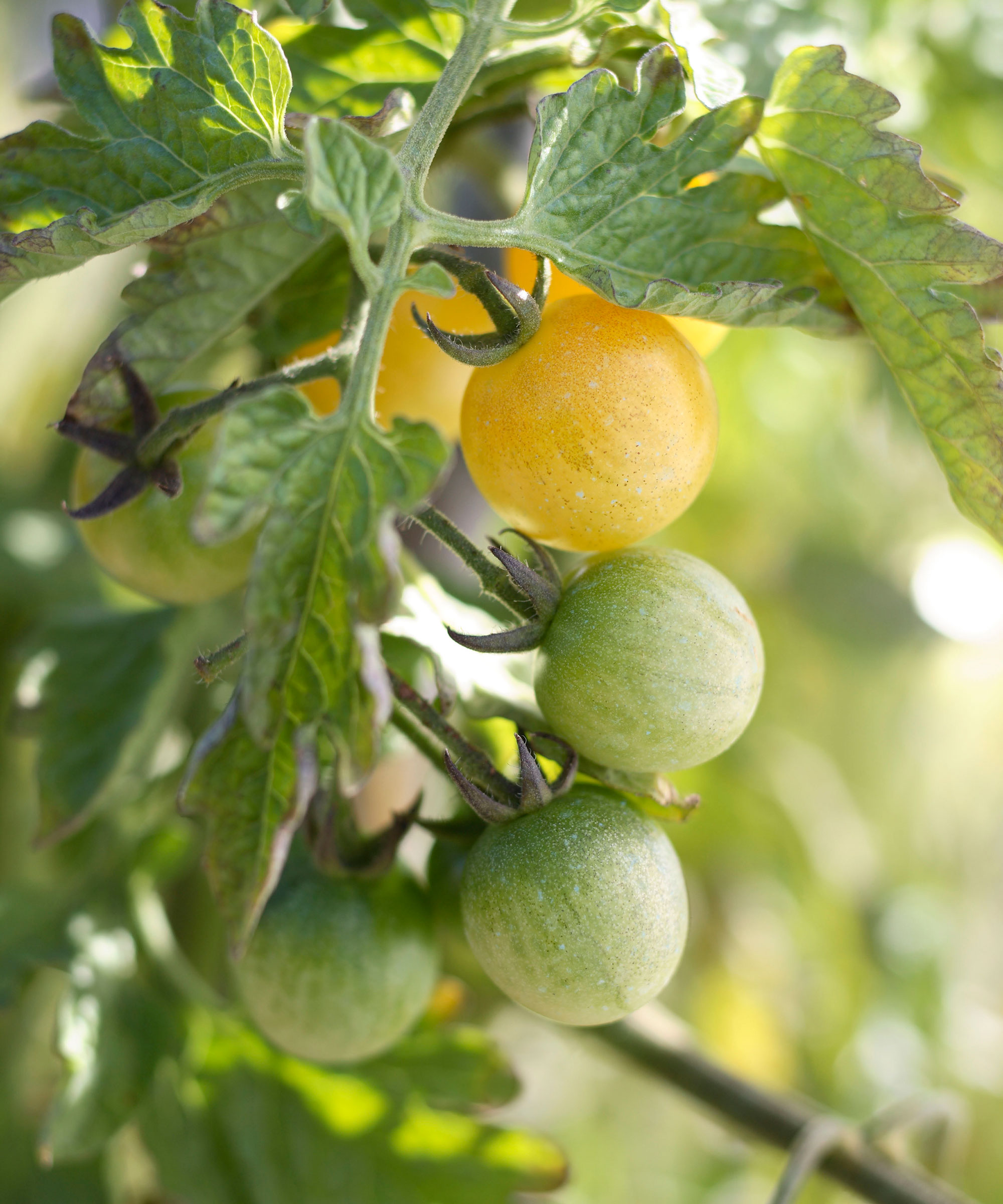
Grow blight resistant tomato varieties
'Many modern tomato varieties have made growing outdoor tomatoes easier because of earlier ripening and improved disease resistance,' says Simon Crawford.
There are a number of varieties that have been bred with blight resistance. Simon Crawford lists the following varieties:
Tomato ‘Merrygold’. 'This is the world’s first blight resistant orange fruited variety. This plant is high yielding, producing a mass of brightly, rich orange tomatoes.'
Tomato ‘Cocktail Crush’. 'With super blight resistance, this variety is ideal for growing outdoors.'
Tomato ‘Crimson Blush’. 'This blight resistant beefsteak tomato is sweeter than other beefsteak varieties.'
Tammy Sons recommends some further blight resistant tomato varieties: 'Tommy Toes are heirloom red tiny tomatoes, robust in flavor and very juicy; Legend variety is a red beefsteak and a favorite of most commercial growers; Juliet is a small hybrid red tomato; and Manyel is a yellow tomato also low in acid.'
There are more varieties that you can try, so do your research before planting.
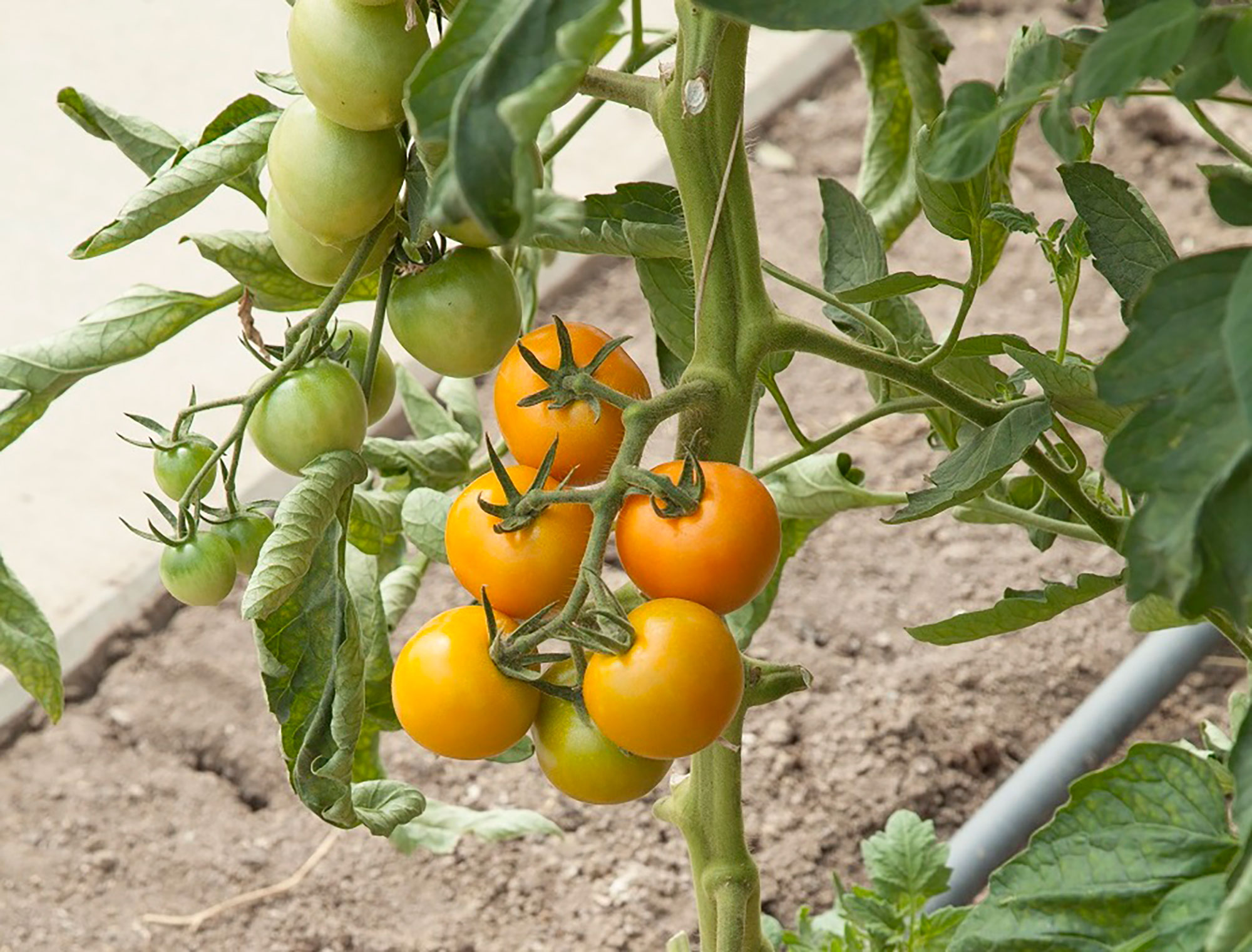
Tomato blight treatment – baking soda
Some gardeners swear by a tomato blight treatment using baking soda.
The US Department of Agriculture advises creating the following solution to help prevent the disease or provide a tomato blight treatment.
To one gallon of water add:
- one heaping tablespoon of baking soda;
- one teaspoon of vegetable oil;
- a small amount of mild soap.
Spray the tomato plants with this solution, and reapply it regularly to maintain its efficiency, USDA advises.
So while there is no way to completely stop the chance of your tomatoes ever developing tomato blight, there are many ways you can reduce the chance of infection, or prevent its spread to your entire crop.
These are among the many vegetable garden ideas to consider when planning your plot.
Sign up to the Homes & Gardens newsletter
Design expertise in your inbox – from inspiring decorating ideas and beautiful celebrity homes to practical gardening advice and shopping round-ups.
Rachel is senior content editor, and writes gardening content for homesandgardens.com, Homes & Gardens magazine, and its sister titles Period Living Magazine and Country Homes & Interiors. She has written for lifestyle magazines for many years, with a particular focus on gardening, historic houses and arts and crafts, but started out her journalism career in BBC radio, where she enjoyed reporting on and writing programme scripts for all manner of stories. Rachel then moved into regional lifestyle magazines, where the topics she wrote about, and people she interviewed, were as varied and eclectic as they were on radio. Always harboring a passion for homes and gardens, she jumped at the opportunity to work on The English Home and The English Garden magazines for a number of years, before joining the Period Living team.
-
 This simple marble hack elevates my budget-friendly wooden kitchen countertops and prevents the dreaded water damage for way less than you’d think
This simple marble hack elevates my budget-friendly wooden kitchen countertops and prevents the dreaded water damage for way less than you’d thinkThis design trick looks expensive, solves a problem, and was the easiest decision I made during my kitchen reno
By Charlotte Olby Published
-
 Emily Blunt gifted Cillian Murphy this $545 pillow – she's 'obsessed' with these luxury pillows, and frankly, so are we
Emily Blunt gifted Cillian Murphy this $545 pillow – she's 'obsessed' with these luxury pillows, and frankly, so are weThe Oppenheimer stars sleep on this ultra-luxe goose down pillow – here's why we love it – plus our affordable alternatives from $35
By Sophie Edwards Published
-
 Water garden ideas – 9 ways to introduce soothing water to your outdoor space
Water garden ideas – 9 ways to introduce soothing water to your outdoor spaceFrom cascading fountains to wildlife ponds, there are plenty of ways to create a tranquil water garden
By Leigh Clapp Published
-
 How to grow poppies
How to grow poppiesFind out how to grow poppies to enjoy the beauty of these brightly colored tissue paper-like blooms
By Leigh Clapp Published
-
 How to grow delphiniums from seed
How to grow delphiniums from seedFind out how to grow delphiniums from seed and enjoy these colorful cottage garden favorites filling beds and borders
By Leigh Clapp Published
-
 How to grow ferns – when and how to plant and care for them
How to grow ferns – when and how to plant and care for themLearn how to grow ferns to enjoy the texture and form of these versatile plants in many areas of your garden
By Leigh Clapp Published
-
 How to grow sweet peas from seed – in borders and pots
How to grow sweet peas from seed – in borders and potsFind out how to grow sweet peas and where to enjoy their wonderful color, ruffled blooms and sweet fragrance in your garden
By Pippa Blenkinsop Published
-
 How to make fat balls for birds – easy steps feed our feathered friends
How to make fat balls for birds – easy steps feed our feathered friendsLearn how to make fat balls for birds to ensure their wellbeing throughout the winter
By Holly Reaney Published
-
 Planning a kitchen garden – from layouts to picking the best crops
Planning a kitchen garden – from layouts to picking the best cropsPlanning a kitchen garden is easy with this expert advice – whether yours is in beds, borders or a dedicated patch – you're guaranteed success
By Leigh Clapp Published
-
 How to grow cosmos – expert tips on when and where to plant these flowers
How to grow cosmos – expert tips on when and where to plant these flowersLearn how to grow cosmos to add bright color in your garden from summer through to fall with their beautiful blooms
By Leigh Clapp Published